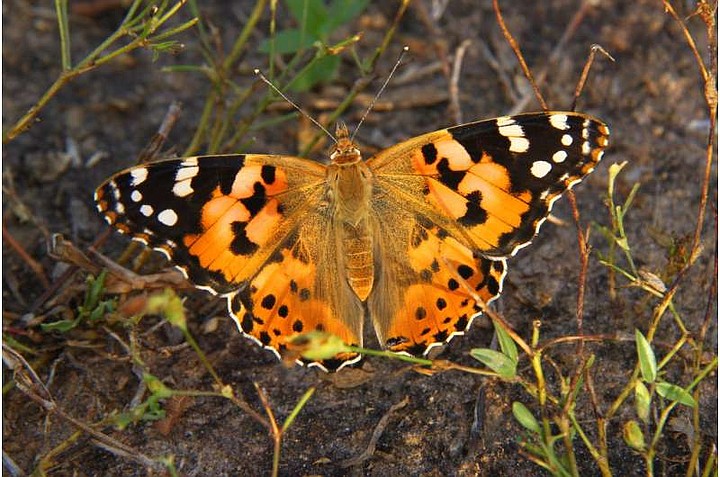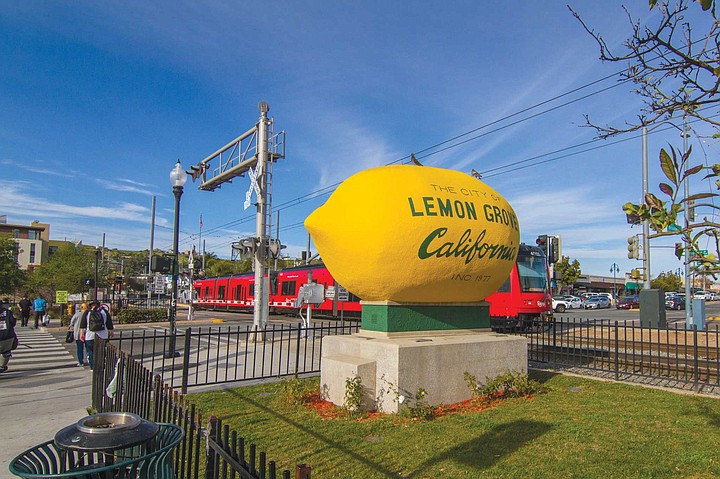 Facebook
Facebook
 X
X
 Instagram
Instagram
 TikTok
TikTok
 Youtube
Youtube

Painted Lady Butterflies are on the wing across San Diego County this month on what appears to be a significant migration from the Anza-Borrego Desert and northern Baja California toward the coast. Two weeks ago a parade of thousands of darting painted ladies were observed at the foot of Palomar Mountain, and last week there were reports of swarms of painted ladies near San Diego County’s coastline. Chances are you will see these pale orange and brown butterflies winging west or northwest, toward greener, more succulent vegetation and away from the drying desert flora. With continued rainfall, the current migration could continue through April.

The Annual Green-to-Golden Transition of San Diego’s wild grasslands starts during late March or early April, depending on the amount of late-season rainfall. North-facing hillsides and canyon slopes retain the green color longer, as they are less exposed to drying sunshine. Locally, most of the wild grasses are naturalized (non-native) annuals, the seeds of which were introduced along with hay and other grains brought in by the Spaniards well over a century ago. Some of the mountain meadows have remnants of native grasses, which remain more or less green almost the year round. These rare native grasslands can be found in certain parts of Cuyamaca Rancho State Park and more widely distributed at the Santa Rosa Plateau Ecological Reserve in the Santa Ana Mountains west of Temecula.

The Sticky-Sweet Odor of citrus blossoms is wafting on the spring breezes this year, as it has in every year since the 1870s, when the county’s first commercially planted orange and lemon groves began to produce fruit. From early plantings in areas like National City and Lemon Grove, citrus groves spread east and north as urbanization encroached. Today, a car or bicycle trip through Rancho Santa Fe, Pauma Valley, and the outskirts of Escondido, Vista, and Fallbrook induces a pleasant reminiscence of San Diego County’s agricultural past.
Full Moon occurs on the evening of Saturday, March 27. Watch as the amber disk of the moon crawls above the east horizon about 25 minutes after the sun sets in the west. Twelve hours later, you can watch the moon sink into the Pacific Ocean while the sun is coming up on the other side of the sky. This out-of-phase, rise-set synchronicity is characteristic of every full moon. The 12-hour difference on this occasion is explained by the fact that both the sun and the moon will be near opposing equinoxes in the sky.
The above comes from the Outdoors listings in the Reader compiled by Jerry Schad, author of Afoot & Afield in San Diego County. Schad died in 2011. Planet information from SkyandTelescope.org.


Painted Lady Butterflies are on the wing across San Diego County this month on what appears to be a significant migration from the Anza-Borrego Desert and northern Baja California toward the coast. Two weeks ago a parade of thousands of darting painted ladies were observed at the foot of Palomar Mountain, and last week there were reports of swarms of painted ladies near San Diego County’s coastline. Chances are you will see these pale orange and brown butterflies winging west or northwest, toward greener, more succulent vegetation and away from the drying desert flora. With continued rainfall, the current migration could continue through April.

The Annual Green-to-Golden Transition of San Diego’s wild grasslands starts during late March or early April, depending on the amount of late-season rainfall. North-facing hillsides and canyon slopes retain the green color longer, as they are less exposed to drying sunshine. Locally, most of the wild grasses are naturalized (non-native) annuals, the seeds of which were introduced along with hay and other grains brought in by the Spaniards well over a century ago. Some of the mountain meadows have remnants of native grasses, which remain more or less green almost the year round. These rare native grasslands can be found in certain parts of Cuyamaca Rancho State Park and more widely distributed at the Santa Rosa Plateau Ecological Reserve in the Santa Ana Mountains west of Temecula.

The Sticky-Sweet Odor of citrus blossoms is wafting on the spring breezes this year, as it has in every year since the 1870s, when the county’s first commercially planted orange and lemon groves began to produce fruit. From early plantings in areas like National City and Lemon Grove, citrus groves spread east and north as urbanization encroached. Today, a car or bicycle trip through Rancho Santa Fe, Pauma Valley, and the outskirts of Escondido, Vista, and Fallbrook induces a pleasant reminiscence of San Diego County’s agricultural past.
Full Moon occurs on the evening of Saturday, March 27. Watch as the amber disk of the moon crawls above the east horizon about 25 minutes after the sun sets in the west. Twelve hours later, you can watch the moon sink into the Pacific Ocean while the sun is coming up on the other side of the sky. This out-of-phase, rise-set synchronicity is characteristic of every full moon. The 12-hour difference on this occasion is explained by the fact that both the sun and the moon will be near opposing equinoxes in the sky.
The above comes from the Outdoors listings in the Reader compiled by Jerry Schad, author of Afoot & Afield in San Diego County. Schad died in 2011. Planet information from SkyandTelescope.org.
Comments